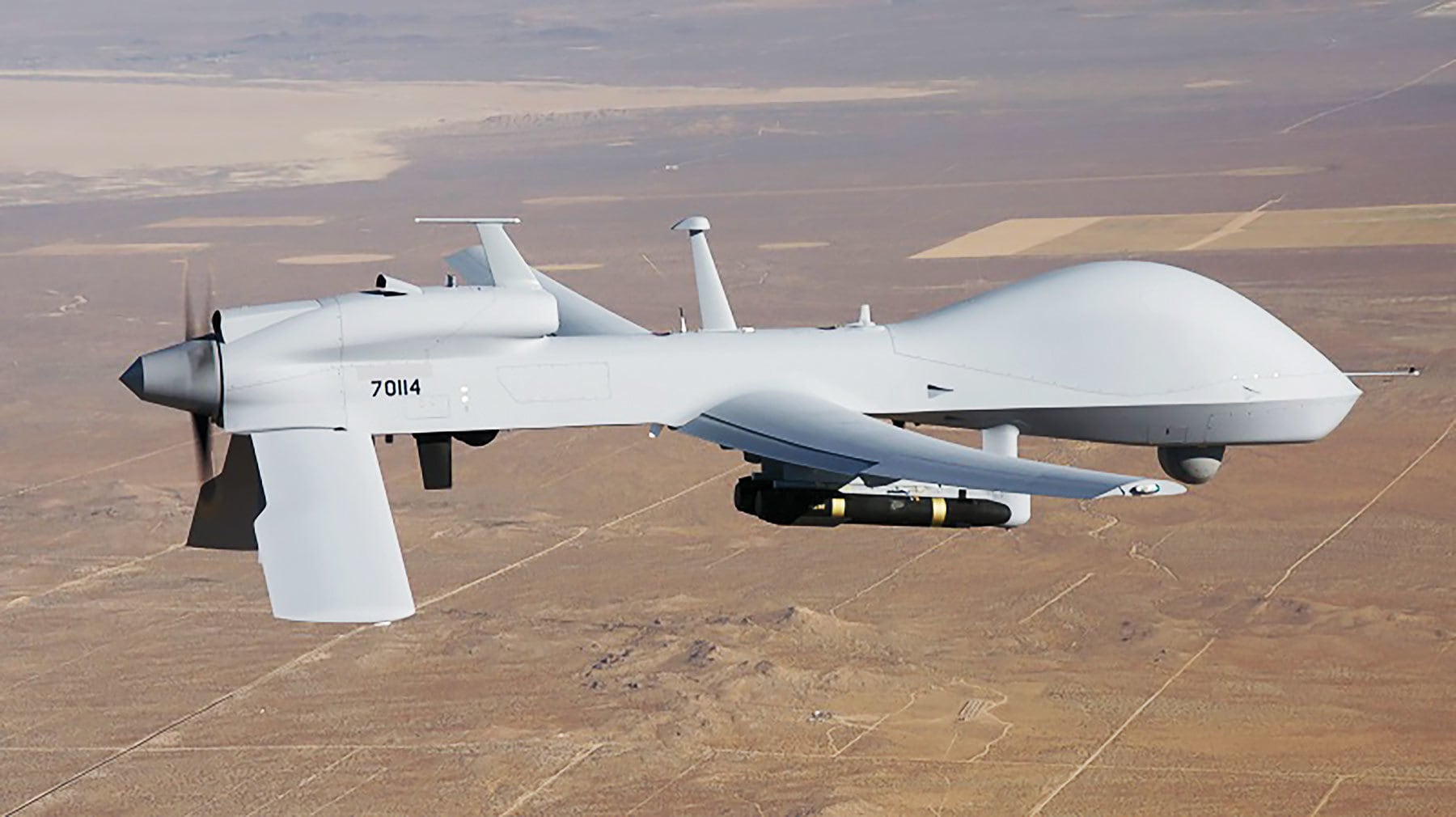WASHINGTON — The U.S. Army demonstrated its first brigade airborne electronic warfare jamming pod at an exercise this summer, and for the first time outfitting it to a Gray Eagle Extended Range drone.
The Multifunctional Electronic Warfare (MFEW) Air Large is the Army’s first organic brigade electronic attack asset mounted on an MQ-1C Gray Eagle drone and slated to be fielded in 2022.
In the September time frame, the system participated in a closely held demonstration of the Army’s Architecture, Automation, Autonomy and Interfaces capability, which was built by the service’s Future Vertical Lift Cross-Functional Team to allow operators to control various aspects of Gray Eagle operations.
RELATED

“Lockheed Martin performed ground-based testing for the U.S. Army’s Multi-Function Electronic Warfare-Air Large system at an Army test center that included electronic attack and electronic warfare support against several communications and non-communications targets,” Dave Wagner, senior program manager of cyber and electronic warfare at Lockheed, told C4ISRNET in an Oct. 13 interview.
Lockheed is building the system for the Army and was awarded nearly $75 million in January for the second phase of the program.
Wagner also said during the exercise this summer, the pod was integrated onto a Gray Eagle Extended Range for the first time. Moreover, under aircraft power, participants were able to perform ground-based electromagnetic compatibility testing of electronic attack techniques and electronic support survey collection, he said.
One of the last publicized activities in which MFEW participated yielded several valuable findings for Army leaders, including the ability to see electronic threats from farther away because the platform is airborne and can see over the horizon.
MFEW is just one aspect to the Army’s multifaceted approach to reinvigorate electronic warfare capability to the field after it divested much of its systems following the Cold War.
Other systems include the Terrestrial Layer System-Brigade Combat Team — the service’s first integrated electronic warfare, signals intelligence and cyber platform mounted on a Stryker for brigades — and the TLS-Echelons Above Brigade — a larger version of TLS-BCT designed to see signals deeper into enemy territory for theater, corps and division levels.
The Army is also planning to develop MFEW for rotary systems and smaller unmanned platforms, though officials have said they are still a ways off, especially in regard to small drones. The electronic warfare community is awaiting the Army’s decision regarding replacing the RQ-7 Shadow drone.
The 30-month phase two work for MFEW will push forward some of what took place in the first phase, Wagner said, adding the parties involved will perform more demonstrations of electronic warfare and radio frequency-enabled cyber capabilities, as well as additional tests and demonstration activities.
Mark Pomerleau is a reporter for C4ISRNET, covering information warfare and cyberspace.








